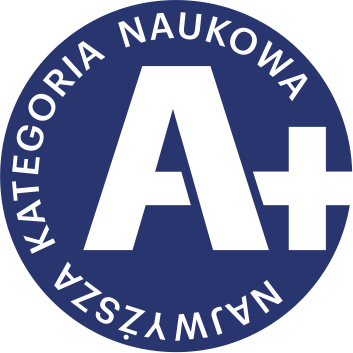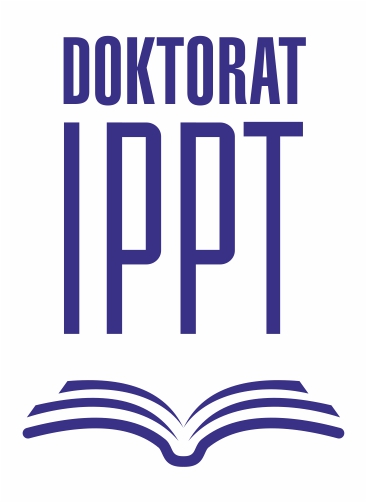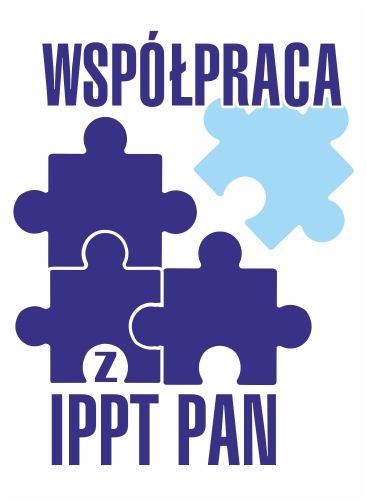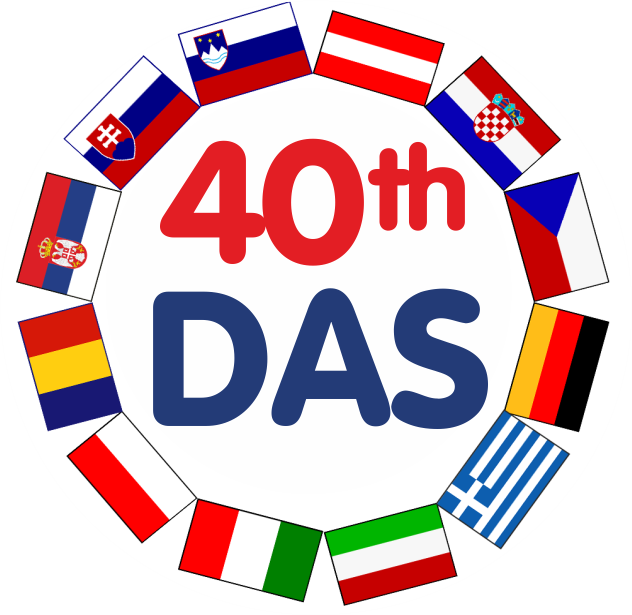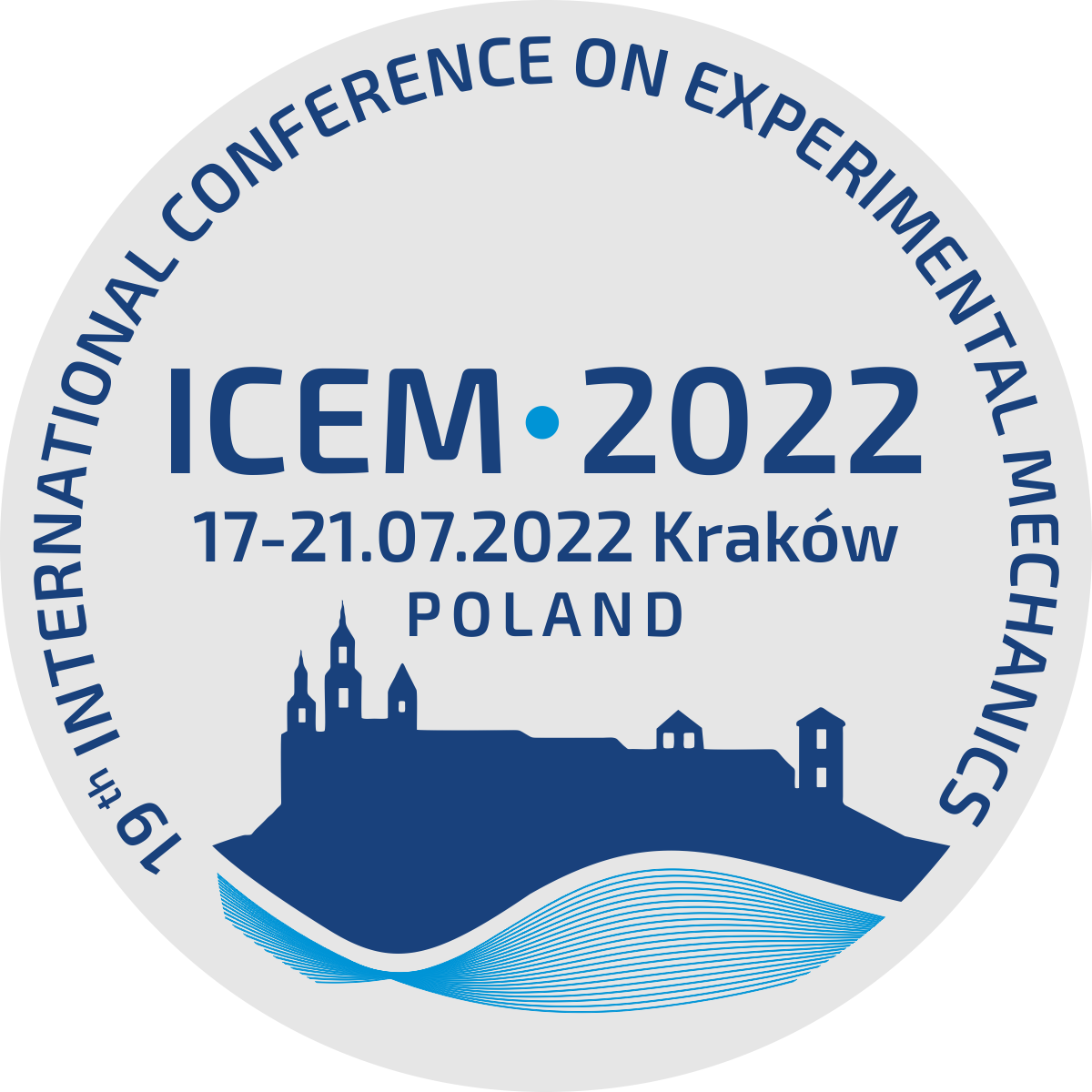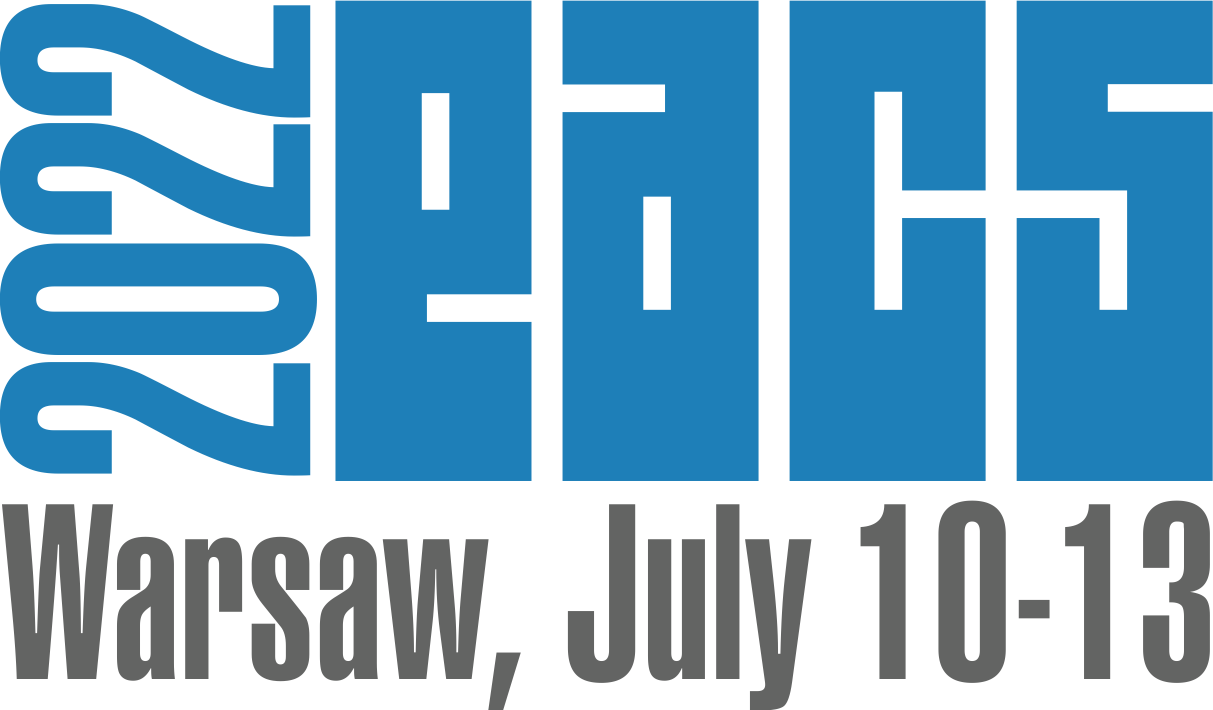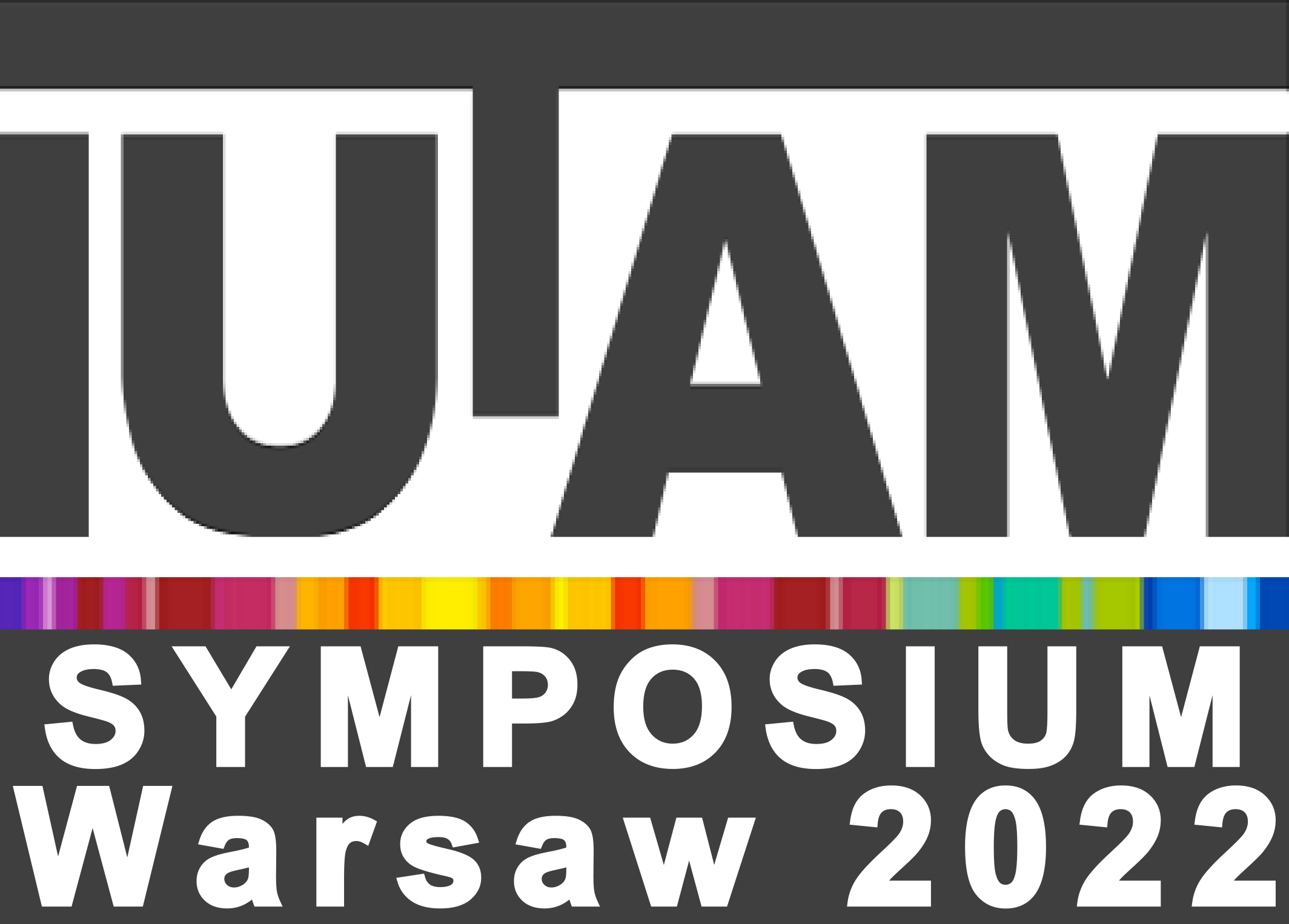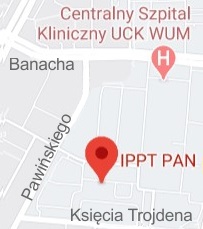| 1. |
Bandzerewicz A.♦, Wierzchowski K.♦, Mierzejwska J.♦, Denis P., Gołofit T.♦, Patrycja S.♦, Pilarek M.♦, Gadomska-Gajadhur A.♦, Biological Activity of Poly(1,3-propanediol citrate) Films andNonwovens: Mechanical, Thermal, Antimicrobial, andCytotoxicity Studies,
Macromolecular Rapid Communications, ISSN: 1521-3927, DOI: 10.1002/marc.202300452, Vol.45, pp.1-18, 2024 Streszczenie:
Polymers are of great interest for medical and cosmeceutical applications. Thecurrent trend is to combine materials of natural and synthetic origin in orderto obtain products with appropriate mechanical strength and goodbiocompatibility, additionally biodegradable and bioresorbable. Citric acid,being an important metabolite, is an interesting substance for the synthesis ofmaterials for biomedical applications. Due to the high functionality of themolecule, it is commonly used in biomaterials chemistry as a crosslinkingagent. Among citric acid-based biopolyesters, poly(1,8-octanediol citrate) isthe best known. It shows application potential in soft tissue engineering. Thiswork focuses on a much less studied polyester, poly(1,3-propanediol citrate).Porous and non-porous materials based on the synthesized polyesters areprepared and characterized, including mechanical, thermal, and surfaceproperties, morphology, and degradation. The main focus is on assessing thebiocompatibility and antimicrobial properties of the materials. Słowa kluczowe:
biomaterials, cell cultures, citric acid polyesters, electrospinning Afiliacje autorów:
| Bandzerewicz A. | - | inna afiliacja | | Wierzchowski K. | - | inna afiliacja | | Mierzejwska J. | - | inna afiliacja | | Denis P. | - | IPPT PAN | | Gołofit T. | - | inna afiliacja | | Patrycja S. | - | inna afiliacja | | Pilarek M. | - | inna afiliacja | | Gadomska-Gajadhur A. | - | Nałęcz Institute of Biocybernetics and Biomedical Engineering, Polish Academy of Sciences (PL) |
|  | 100p. |
| 2. |
Bandzerewicz A.♦, Howis J.♦, Wierzchowski K.♦, Miroslav S.♦, Jiri H.♦, Denis P., Gołofit T.♦, Pilarek M.♦, Gadomska-Gajadhur A.♦, Exploring the application of poly(1,2-ethanediol citrate)/polylactide nonwovens in cell culturing,
Frontiers in Bioengineering and Biotechnology, ISSN: 2296-4185, DOI: 10.3389/fbioe.2024.1332290, Vol.12, pp.1-13, 2024 Streszczenie:
Biomaterials containing citric acid as a building unit show potential for use as blood vessel and skin tissue substitutes. The success in commercializing implants containing a polymer matrix of poly(1,8-octanediol citrate) provides a rationale for exploring polycitrates based on other diols. Changing the aliphatic chain length of the diol allows functional design strategies to control the implant’s mechanical properties, degradation profile and surface energy. In the present work, poly(1,2-ethanediol citrate) was synthesized and used as an additive to polylactide in the electrospinning process. It was established that the content of polycitrate greatly influences the nonwovens’ properties: an equal mass ratio of polymers resulted in the best morphology. The obtained nonwovens were characterized by surface hydrophilicity, tensile strength, and thermal properties. L929 cell cultures were carried out on their surface. The materials were found to be non-cytotoxic and the degree of porosity was suitable for cell colonization. On the basis of the most important parameters for assessing the condition of cultured cells (cell density and viability, cell metabolic activity and lactate dehydrogenase activity), the potential of PLLA + PECit nonwovens for application in tissue engineering was established. Afiliacje autorów:
| Bandzerewicz A. | - | inna afiliacja | | Howis J. | - | inna afiliacja | | Wierzchowski K. | - | inna afiliacja | | Miroslav S. | - | inna afiliacja | | Jiri H. | - | inna afiliacja | | Denis P. | - | IPPT PAN | | Gołofit T. | - | inna afiliacja | | Pilarek M. | - | inna afiliacja | | Gadomska-Gajadhur A. | - | Nałęcz Institute of Biocybernetics and Biomedical Engineering, Polish Academy of Sciences (PL) |
|  | 100p. |
| 3. |
Kołakowska A.♦, Kołbuk-Konieczny D., Chwojnowski A.♦, Rafalski A.♦, Gadomska-Gajadhur A.♦, Chitosan-Based High-Intensity Modification of the Biodegradable Substitutes for Cancellous Bone,
Journal of Functional Biomaterials, ISSN: 2079-4983, DOI: 10.3390/jfb14080410, Vol.14, No.8, pp.410-1-15, 2023 Streszczenie:
An innovative approach to treating bone defects is using synthetic bone substitutes made of biomaterials. The proposed method to obtain polylactide scaffolds using the phase inversion technique with a freeze extraction variant enables the production of substitutes with morphology similar to cancellous bone (pore size 100–400 µm, open porosity 94%). The high absorbability of the implants will enable their use as platelet-rich plasma (PRP) carriers in future medical devices. Surface modification by dipping enabled the deposition of the hydrophilic chitosan (CS) layer, maintaining good bone tissue properties and high absorbability (850% dry weight). Introducing CS increases surface roughness and causes local changes in surface free energy, promoting bone cell adhesion. Through this research, we have developed a new and original method of low-temperature modification of PLA substitutes with chitosan. This method uses non-toxic reagents that do not cause changes in the structure of the PLA matrix. The obtained bone substitutes are characterised by exceptionally high hydrophilicity and morphology similar to spongy bone. In vitro studies were performed to analyse the effect of morphology and chitosan on cellular viability. Substitutes with properties similar to those of cancellous bone and which promote bone cell growth were obtained. Słowa kluczowe:
chitosan, polylactide, bone substitute, tissue regeneration Afiliacje autorów:
| Kołakowska A. | - | inna afiliacja | | Kołbuk-Konieczny D. | - | IPPT PAN | | Chwojnowski A. | - | Nałęcz Institute of Biocybernetics and Biomedical Engineering, Polish Academy of Sciences (PL) | | Rafalski A. | - | inna afiliacja | | Gadomska-Gajadhur A. | - | Nałęcz Institute of Biocybernetics and Biomedical Engineering, Polish Academy of Sciences (PL) |
|  | 100p. |
| 4. |
Miętus M.♦, Kolankowski K.♦, Gołofit T.♦, Denis P., Bandzerewicz A.♦, Spychalski M.♦, Mąkosa-Szczygieł M.♦, Pilarek M.♦, Wierzchowski K.♦, Gadomska-Gajadhur A.♦, From Poly(glycerol itaconate) Gels to Novel Nonwoven Materials for Biomedical Applications,
Gels, ISSN: 2310-2861, DOI: 10.3390/gels9100788, Vol.9, No.788, pp.1-19, 2023 Streszczenie:
Electrospinning is a process that has attracted significant interest in recent years. It provides the opportunity to produce nanofibers that mimic the extracellular matrix. As a result, it is possible to use the nonwovens as scaffolds characterized by high cellular adhesion. This work focused on the synthesis of poly(glycerol itaconate) (PGItc) and preparation of nonwovens based on PGItc gels and polylactide. PGItc gels were synthesized by a reaction between itaconic anhydride and glycerol. The use of a mixture of PGItc and PLA allowed us to obtain a material with different properties than with stand-alone polymers. In this study, we present the influence of the chosen ratios of polymers and the OH/COOH ratio in the synthesized PGItc on the properties of the obtained materials. The addition of PGItc results in hydrophilization of the nonwovens’ surface without disrupting the high porosity of the fibrous structure. Spectral and thermal analyzes are presented, along with SEM imagining. The preliminary cytotoxicity research showed that nonwovens were non-cytotoxic materials. It also helped to pre-determine the potential application of PGItc + PLA nonwovens as subcutaneous tissue fillers or drug delivery systems. Słowa kluczowe:
poly(glycerol itaconate), polylactide, electrospinning, tissue engineering, hydrogels Afiliacje autorów:
| Miętus M. | - | inna afiliacja | | Kolankowski K. | - | inna afiliacja | | Gołofit T. | - | inna afiliacja | | Denis P. | - | IPPT PAN | | Bandzerewicz A. | - | Politechnika Warszawska (PL) | | Spychalski M. | - | inna afiliacja | | Mąkosa-Szczygieł M. | - | inna afiliacja | | Pilarek M. | - | inna afiliacja | | Wierzchowski K. | - | inna afiliacja | | Gadomska-Gajadhur A. | - | Nałęcz Institute of Biocybernetics and Biomedical Engineering, Polish Academy of Sciences (PL) |
|  | 20p. |
| 5. |
Wrzecionek M.♦, Bandzerewicz A.♦, Dutkowska E.♦, Dulnik J., Denis P., Gadomska-Gajadhur A.♦, Poly(glycerol citrate)-polylactide nonwovens toward tissue engineering applications,
Polymers for Advanced Technologies, ISSN: 1042-7147, DOI: 10.1002/pat.5407, Vol.32, No.10, pp.3955-3966, 2021 Streszczenie:
In 2002, Robert Langer proposed that new polyester for tissue engineering should have good mechanical properties followed by: covalent bonding (as crosslinking) and hydrogen-bonding interactions; and should be elastic like rubber materials due to three-dimensional network structure. Considering these hypotheses, a polyester made of glycerol and citric acid was designed in this work. Poly(glycerol citrate) should be attractive for tissue engineering because both glycerol and citric acid, taking part in natural human metabolic pathways; and due to the reactant's functionality, 3D networks should be produced easily. Moreover, the reagents are cheap, available, and often used in the food and pharmaceutical industries. In this work, poly(glycerol citrate) was synthesized and then used with PLA for creating porous nonwovens by electrospinning. Produced materials were tested for possible application in the field of tissue engineering. The obtained materials have properties similar to collagen fibers, but still, require refinement for medical applications. Słowa kluczowe:
electrospinning, poly(glycerol citrate), polylactide, tissue engineering Afiliacje autorów:
| Wrzecionek M. | - | Politechnika Warszawska (PL) | | Bandzerewicz A. | - | Politechnika Warszawska (PL) | | Dutkowska E. | - | Politechnika Warszawska (PL) | | Dulnik J. | - | IPPT PAN | | Denis P. | - | IPPT PAN | | Gadomska-Gajadhur A. | - | Nałęcz Institute of Biocybernetics and Biomedical Engineering, Polish Academy of Sciences (PL) |
|  | 70p. |
| 6. |
Budnicka M.♦, Kołbuk D., Ruśkowski P.♦, Gadomska‐Gajadhur A.♦, Poly‐L ‐lactide scaffolds with super pores obtained by freeze‐extraction method,
Journal of Biomedical Materials Research Part B: Applied Biomaterials, ISSN: 1552-4973, DOI: 10.1002/jbm.b.34642, Vol.108, No.8, pp.3162-3173, 2020 Streszczenie:
A nonplanar polylactide scaffold to be used in tissue engineering was obtained by freeze‐extraction method. Properties of the scaffold were modified by adding Eudragit® E100. The impact of the modification on morphology, porosity and pore size, mass absorbability, mechanical properties was determined. Scanning electron microscopy (SEM), hydrostatic weighing test, static compression test was used to this end. The chemical composition of the scaffold was defined based on infrared spectroscopy (FTIR) and energy‐dispersive X‐ray spectroscopy (EDX). Biocompatibility was confirmed by quantitative tests and microscopic observation. The obtained results show that the obtained scaffolds may be applied as a carrier of hydrophilic cellular growth factors for more efficient tissue regeneration. Słowa kluczowe:
cellular studies, Eudragit® E100, freeze-extraction, poly-L-lactide Afiliacje autorów:
| Budnicka M. | - | inna afiliacja | | Kołbuk D. | - | IPPT PAN | | Ruśkowski P. | - | Politechnika Warszawska (PL) | | Gadomska‐Gajadhur A. | - | Nałęcz Institute of Biocybernetics and Biomedical Engineering, Polish Academy of Sciences (PL) |
|  | 140p. |
| 7. |
Budnicka M.♦, Szymaniak M.♦, Kołbuk D., Ruśkowski P.♦, Gadomska-Gajadhur A.♦, Biomineralization of poly-l-lactide spongy bone scaffolds obtained by freeze-extraction method,
Journal of Biomedical Materials Research Part B: Applied Biomaterials, ISSN: 1552-4973, DOI: 10.1002/jbm.b.34441, Vol.108, No.3, pp.868-879, 2020 Streszczenie:
Implants in the form of polymer scaffolds are commonly used to regenerate bone tissue after traumas or tooth extractions. However, few implant formation methods enable building polymer scaffolds allowing to reconstruct larger bone losses without immune response. Spacious, porous poly-l-lactide implants with considerable volume were obtained using the phase inversion method with the freeze-extraction variant. The calcium phosphate (CaP) coating was deposited on implant surfaces with the biomimetic method to improve the implant's osteoconductivity. The substitues morphology was characterized-porosity, size and shape of pores; mechanical properties, mass absorbability of implants before and after mineralization. The characteristics were provided with scanning electron microscopy (SEM), static compression test and hydrostatic weighing, respectively. The presence of CaPs in the entire volume of the implant was confirmed with SEM and infrared spectroscopy with Fourier transform (FTIR). The biocompatibility of scaffolds was confirmed with in vitro quantitative test and microscopic observations. The obtained results show that the implants can be used in tissue engineering as a vehicle of platelet-rich plasma to regenerate critical spongy bone losses. Słowa kluczowe:
bone graft, calcium phosphate(s), cell culture Afiliacje autorów:
| Budnicka M. | - | inna afiliacja | | Szymaniak M. | - | inna afiliacja | | Kołbuk D. | - | IPPT PAN | | Ruśkowski P. | - | Politechnika Warszawska (PL) | | Gadomska-Gajadhur A. | - | Nałęcz Institute of Biocybernetics and Biomedical Engineering, Polish Academy of Sciences (PL) |
|  | 140p. |
| 8. |
Kołbuk D., Jeznach O., Wrzecionek M.♦, Gadomska-Gajadhur A.♦, Poly(glycerol succinate) as an eco-friendly component of PLLA and PLCL fibres towards medical applications,
Polymers, ISSN: 2073-4360, DOI: 10.3390/polym12081731, Vol.12, No.8, pp.1731-1-17, 2020 Streszczenie:
This study was conducted as a first step in obtaining eco-friendly fibres for medical applications using a synthesised oligomer poly(glycerol succinate) (PGSu) as an additive for synthetic poly(L-lactic acid) (PLLA) and poly (L-lactide-co-caprolactone) (PLCL). The effects of the oligomer on the structure formation, morphology, crystallisation behaviour, and mechanical properties of electrospun bicomponent fibres were investigated. Nonwovens were investigated by means of scanning electron microscopy (SEM), wide angle X-ray scattering (WAXS), differential scanning calorimetry (DSC), and mechanical testing. The molecular structure of PLLA fibres is influenced by the presence of PGSu mainly acting as an enhancer of molecular orientation. In the case of semicrystalline PLCL, chain mobility was enhanced by the presence of PGSu molecules, and the crystallinity of bicomponent fibres increased in relation to that of pure PLCL. The mechanical properties of bicomponent fibres were influenced by the level of PGSu present and the extent of crystal formation of the main component. An in vitro study conducted using L929 cells confirmed the biocompatible character of all bicomponent fibres. Słowa kluczowe:
poly(glycerol succinate), plasticiser, eco-friendly polymer, electrospinning, hyperbranched polyester Afiliacje autorów:
| Kołbuk D. | - | IPPT PAN | | Jeznach O. | - | IPPT PAN | | Wrzecionek M. | - | Politechnika Warszawska (PL) | | Gadomska-Gajadhur A. | - | Nałęcz Institute of Biocybernetics and Biomedical Engineering, Polish Academy of Sciences (PL) |
|  | 100p. |
| 9. |
Kruk A.♦, Gadomska-Gajadhur A.♦, Dulnik J., Ruśkowski P.♦, The influence of the molecular weight of polymer on the morphology, functional properties and L929 fibroblasts growth on polylactide membranes for tissue engineering,
International Journal of Polymeric Materials and Polymeric Biomaterials, ISSN: 0091-4037, DOI: 10.1080/00914037.2020.1798440, pp.1-13, 2020 Streszczenie:
The main goal of tissue engineering (TE) is supporting the regeneration of damaged tissues that are difficult to regenerate. The experimental results of the preparation of semi-permeable membranes for cell cultures are presented. The effect of the PLA molecular weight and addition of pore precursors on the morphology of the membranes was studied. The pore precursor of choice was polyvinylpyrrolidone (PVP). It was found that semi-permeable membranes for application in tissue engineering can be prepared with polylactides of molecular weight more significant than 37,000 g/mol. Moreover, it was observed that the growth of the molecular weight of the polymer, the porosity, the size of the pores, the Young modulus and maximum tensile increased. Additionally, to obtain a better morphology of the membranes, PVP should be added to the polymeric solution. Positive growth of L929 fibroblast cells on the obtained scaffolds was shown. Słowa kluczowe:
biodegradable polymers, cell cultures, L929 fibroblasts, polylactide, scaffolds, tissue engineering Afiliacje autorów:
| Kruk A. | - | Politechnika Warszawska (PL) | | Gadomska-Gajadhur A. | - | Nałęcz Institute of Biocybernetics and Biomedical Engineering, Polish Academy of Sciences (PL) | | Dulnik J. | - | IPPT PAN | | Ruśkowski P. | - | Politechnika Warszawska (PL) |
|  | 70p. |
| 10. |
Kruk A.♦, Gadomska-Gajadhur A.♦, Rykaczewska I.♦, Dulnik J., Ruśkowski P.♦, Synoradzki L.♦, Influence of liquid pore precursors on morphology and mechanical properties of 3D scaffolds obtained by dry inversion phase method,
Journal of Biomedical Materials Research Part B: Applied Biomaterials, ISSN: 1552-4973, DOI: 10.1002/jbm.b.34200, Vol.107, No.4, pp.1079-1087, 2019 Streszczenie:
Polyester 3D scaffolds were obtained by dry inversion phase method. The influence of a polymer and liquid pore precursor type on the 3D scaffolds morphology, porosity and mechanical properties was tested. Polymers and precursors forming a porous structure were identified. It was found that 3D scaffolds having the most preferable structure for cell cultures were obtained from polylactide with the addition of n‐butanol as the liquid pore precursor. Słowa kluczowe:
liquid pore precursors, mechanical properties, dry inversion phase method, 3D scaffolds Afiliacje autorów:
| Kruk A. | - | Politechnika Warszawska (PL) | | Gadomska-Gajadhur A. | - | Nałęcz Institute of Biocybernetics and Biomedical Engineering, Polish Academy of Sciences (PL) | | Rykaczewska I. | - | Politechnika Warszawska (PL) | | Dulnik J. | - | IPPT PAN | | Ruśkowski P. | - | Politechnika Warszawska (PL) | | Synoradzki L. | - | Politechnika Warszawska (PL) |
|  | 140p. |
| 11. |
Denis P., Wrzecionek M.♦, Gadomska‐Gajadhur A.♦, Sajkiewicz P., Poly(glycerol sebacate)–poly(l-lactide) nonwovens. Towards attractive electrospun material for tissue engineering,
Polymers, ISSN: 2073-4360, DOI: 10.3390/polym11122113, Vol.11, No.12, pp.2113-1-26, 2019 Streszczenie:
Two types of poly(glycerol sebacate) (PGS) prepolymers were synthesized and electrospun with poly(l-lactic acid) (PLA), resulting in bicomponent nonwovens. The obtained materials were pre-heated in a vacuum, at different times, to crosslink PGS and investigate morphological and structural dependencies in that polymeric, electrospun system. As both PGS and PLA are sensitive to pre-heating (crosslinking) conditions, research concerns both components. More interest is focused on the properties of PGS, considering further research for mechanical properties and subsequent experiments with PGS synthesis. Electrospinning of PGS blended with PLA does not bring difficulties, but obtaining elastomeric properties of nonwovens is problematic. Even though PGS has many potential advantages over other polyesters when soft tissue engineering is considered, its full utilization via the electrospinning process is much harder in practice. Further investigations are ongoing, especially with the promising PGS prepolymer with a higher esterification degree and its variations. Słowa kluczowe:
electrospinning, degradable polymers, synthesis, structure, crosslinking Afiliacje autorów:
| Denis P. | - | IPPT PAN | | Wrzecionek M. | - | Politechnika Warszawska (PL) | | Gadomska‐Gajadhur A. | - | Nałęcz Institute of Biocybernetics and Biomedical Engineering, Polish Academy of Sciences (PL) | | Sajkiewicz P. | - | IPPT PAN |
|  | 100p. |
| 12. |
Kruk A.♦, Gadomska-Gajadhur A.♦, Dulnik J., Rykaczewska I.♦, Ruśkowski P.♦, Sebai A.♦, Synoradzki L.♦, Ocena właściwości użytkowych rusztowań komórkowych o strukturze gąbczastej oraz wzrostu na nich fibroblastów,
POLIMERY, ISSN: 0032-2725, DOI: 10.14314/polimery.2018.4.3, Vol.63, No.4, pp.18-22, 2018 Streszczenie:
Zbadano wpływ dodatku ciekłych prekursorów porów na morfologię, porowatość i właściwości mechaniczne polilaktydowych rusztowań komórkowych. Rusztowania otrzymano metodą mokrej inwersji faz w wariancie freeze extraction. Oceniono cytotoksyczność wybranych rusztowań w stosunku do fibroblastów mysich oraz ich przydatność do hodowli komórkowych. Wykazano, że dodatek prekursora porów dopolilaktydu korzystnie zmienia morfologię wytworzonych rusztowań, jednocześnie pogarszając ich wytrzymałość mechaniczną. Stwierdzono, że polilaktydowe rusztowania komórkowe z powodzeniem mogą być wykorzystywane do hodowli komórkowych. Słowa kluczowe:
usztowania komórkowe, polilaktyd, hodowle komórkowe, fibroblasty Afiliacje autorów:
| Kruk A. | - | Politechnika Warszawska (PL) | | Gadomska-Gajadhur A. | - | Nałęcz Institute of Biocybernetics and Biomedical Engineering, Polish Academy of Sciences (PL) | | Dulnik J. | - | IPPT PAN | | Rykaczewska I. | - | Politechnika Warszawska (PL) | | Ruśkowski P. | - | Politechnika Warszawska (PL) | | Sebai A. | - | Wroclaw University of Science and Technology (PL) | | Synoradzki L. | - | Politechnika Warszawska (PL) |
|  | 15p. |















